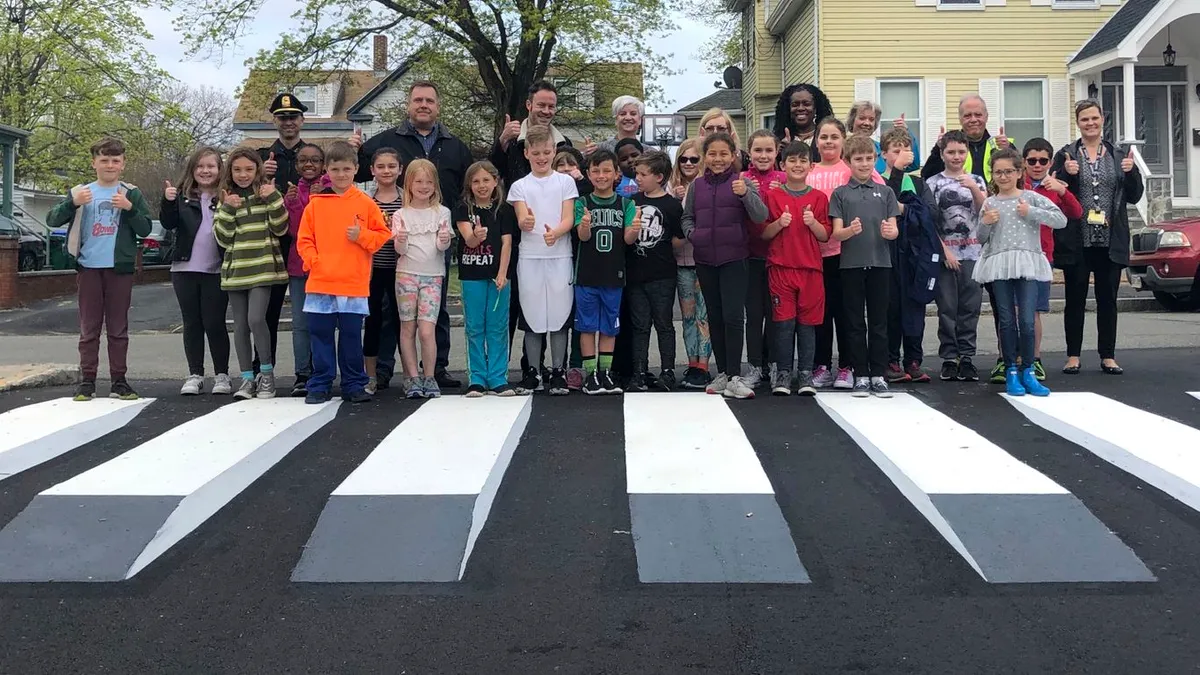Dive Brief:
- The City of Cincinnati has recommended against using 3D crosswalks as a strategy to increase pedestrian safety, citing a Federal Highway Administration (FHWA) guidance that says the idea "can result in unsafe behavior by drivers."
- City councilman Jeff Pastor proposed using 3D crosswalks — which are painted to appear raised — outside of public schools as a way to get drivers to slow down. The proposal was then referred to the city’s Department of Transportation and Engineering for more research.
- The FHWA has said that 3D crosswalks are not compliant with the Manual on Uniform Traffic Control Devices (MUTCD), which sets standards for road markings and equipment. According to the agency, one field experiment showed that a "significant percentage" of drivers swerved when seeing the markings, and that over time as many as one in ten drivers might make an "evasive or erratic maneuver" seeing it for the first time.
Dive Insight:
Pedestrian deaths have been on the rise across the country; preliminary figures collected by the Governors Highway Safety Association found that 2018 was likely to be the deadliest for pedestrians since 1990, and a Smart Growth America report found that deaths have steadily increased over the past decade. In Cincinnati, 13 public school students were struck by drivers in 2018, and there have been 120 crashes involving a pedestrian so far this year, according to WCPO.
This increase has led to cities considering various proposals to meet their Vision Zero goals and eliminate traffic fatalities. Cities have explored banning digital devices in roadways, lowering speed limits in certain areas and even redesigning sidewalks and streets. The 3D crosswalks are another creative solution; an optical illusion makes it appear that the painted crosswalk is raised, like a speed bump. London has installed a similar floating sidewalk, and the town of Medford, MA installed their own last year.
The Cincinnati memo and FHWA guidance shows that, while they do draw drivers' attention, the crosswalks may have the unintended consequence of startling drivers into unsafe driving. Based on field experiments, FHWA said the "potential for a significant percentage of drivers to react unpredictably is too great a risk to allow further field experimentation."
Medford, however, says its experiment has been successful. Deanna Deveney, director of intergovernmental affairs for the city, said there have been no safety incidents like those described in the FHWA guidance, although the city's first 3D crosswalk was installed on a driveway, not a main road. In fact, Deveney said, the city plans to install two more at other elementary schools before the academic year begins.










